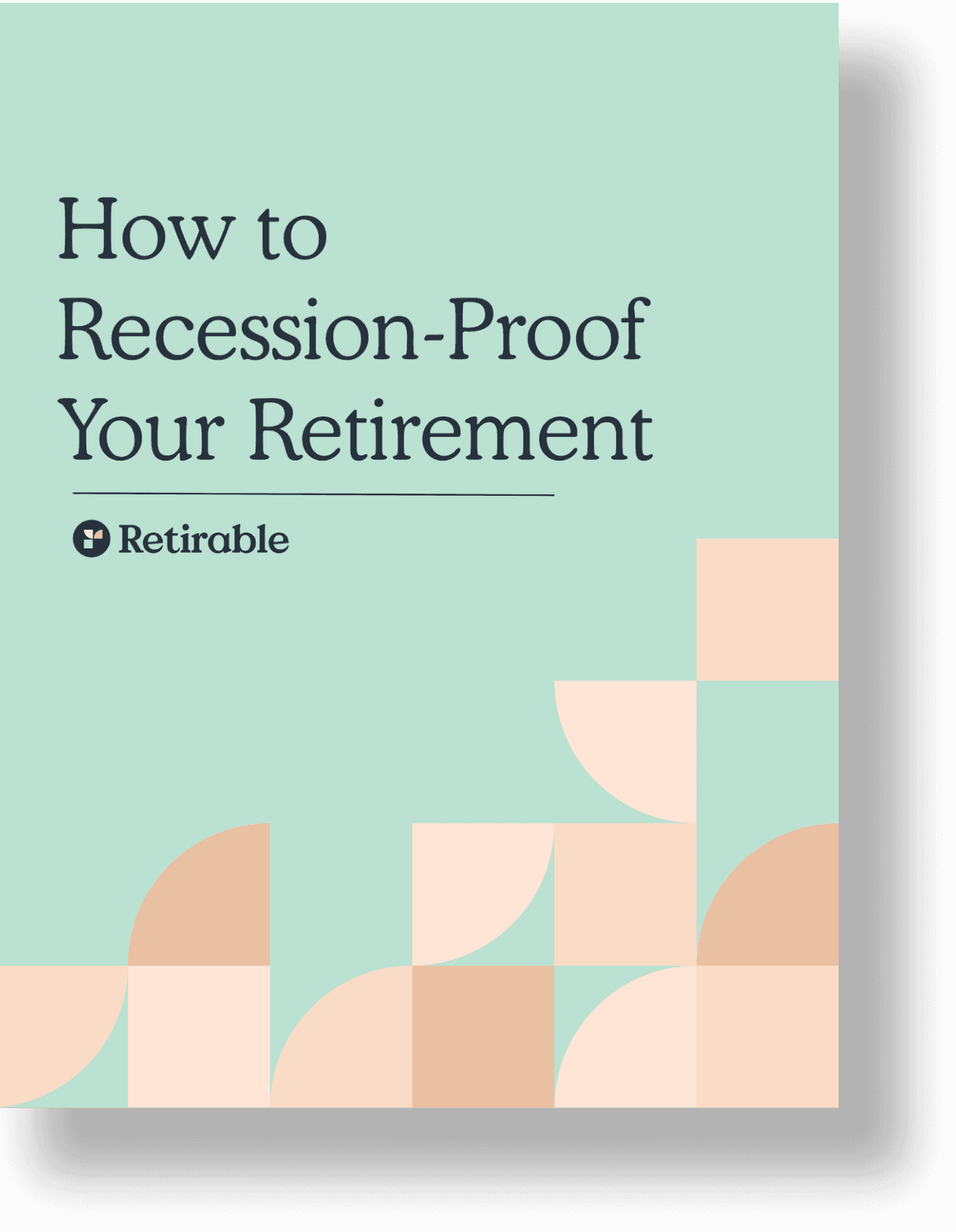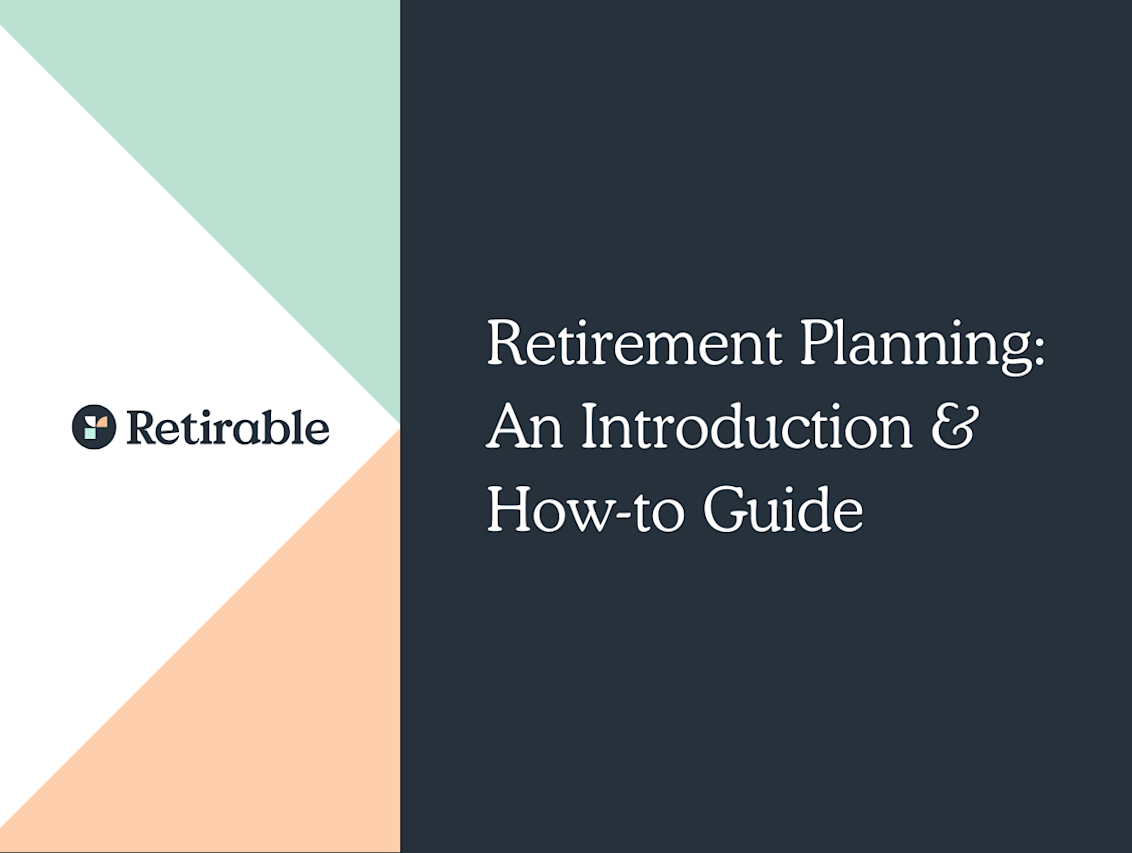Retirement Accounts
When deciding how to pick investments for retirement, it’s important to learn the various tools and offerings available to you, so you can strategize for a diversified portfolio that will keep you comfortable during the final years of your life.

C.E Larusso
•
Published September 7th, 2023
Table of Contents
Key Takeaways
Most successful retirement strategies focus on diversification, with a mix of high and low risk investment offerings
Take advantage of any employer-sponsored plan offered to you—many come with matching contributions
Consider the total return approach for retirement, which takes a holistic look at the rate of return for all of your investments
If retirement investing is new to you, terms like “target date” and “total return” might sound closer to Portuguese than English. On top of that, the financial world is full of tricky acronyms (TIPS means “Treasury Inflation-Protected Securities,” in case you were wondering). When deciding how to pick investments for retirement, it’s important to learn the various tools and offerings available to you, so you can strategize for a diversified portfolio that will keep you comfortable during the final years of your life.
Calculating How Much Money to Save in Retirement
The amount you will need to enjoy a comfortable retirement should be informed by your lifestyle, activities you wish to pursue (travel, for instance), expected medical costs, and other factors. That said, there are some popular rules of thumb to look into as you strategize how you save.
By salary percentage: Many advisors recommend saving a percentage of your gross earnings each year, starting in your twenties. (Typically, 15% or more is suggested)
Salary x Age: Another method is to calculate with your salary and your age. Aim to save at least 1x your salary by 30, 3x by 40, 6x by 50, 8x by 60, and 10x by 67.
Follow the 80% rule: Research suggests that most people spend between 70-90% of their pre-retirement income during retirement (so if you spend $50,000 per year, expect to spend between $35,000 and $45,000 per year of retirement)
Use a retirement calculator: Retirable has a calculator that will let you input your birthday, savings, and retirement age to get an estimate of how far your current savings will take you, which can help you figure out how far you have left to go and set realistic goals.
While these methods are good ways to get a snapshot of where you’re at and where you may need to be, the best way to strategize for your retirement and how to get there is to have a clear picture of what you want your retirement to look like and discuss your goals with a financial advisor.
Types of retirement investments & methods
Developing a diverse retirement investment strategy means knowing the various products and tools available to you and how they interact with the financial markets.
Target-date funds
Target-date funds strategize investments based on the date at which you wish to start withdrawing your assets. The investments are intentionally meant to start off, during your younger years, as higher-risk, usually including domestic and global equities, and slowly start to taper into more conservative investments like bonds as you move closer to your target date.
Target date funds are known as fund-of-funds, indicating that they hold many funds, mixing stocks and bonds with other investments like real estate. Because of the diversified nature of target-date funds, they are very popular investment tools that many people choose to leave on autopilot until they need the asset.
That said, target-date funds calculate investments based almost solely on your current age and when you wish to retire. Your portfolio will be pretty similar to others who are in your same age bracket, and doesn’t necessarily personalize the portfolio to your changing needs. You might need to retire earlier or later than the target date, for instance.
Mutual funds
Another tool that has diversification built-in, mutual funds allow you to pool your money with other investors to buy stocks, bonds, commodities, and other investments. The price of the mutual fund is commonly referred to as the net asset value (NAV) and is determined by the value of the various securities in the portfolio, divided by the number of shares.
Mutual funds are controlled and directed by professional money managers, who choose how to allocate the fund’s assets and work to produce capital gains for the investors. These financial vehicles can be a cost-effective way to invest, as you can typically buy funds with as little as $2,500—some go as low as $100. In addition, you have the added benefit of a professional manager at the helm of your investment, making sound choices based on which investment will produce the greatest gain for you. You can also choose your manager, which allows you to dial into the kind of investments you’d like to focus on, from macroeconomic investing to value investing.
Mutual funds, however, have no guarantee of appreciation. The FDIC does not guarantee any mutual fund investments, so you should be aware of this risk. In addition, mutual funds do have higher fees associated with them that reduce the overall payout you will receive, and fees vary from fund to fund.
Index funds
Index funds are another financial tool that include mutual funds, as well as exchange-traded funds. An index fund portfolio is crafted to track and match a financial market index, such as the Standard & Poor 500 Index, the Russell 2000 Index, or the Wilshire 5000 Total Market Index.
The fund’s manager will buy stocks and bonds in the market index it tracks; some funds invest in all of the securities available in a market index, while others will only invest in some.
Exchange-traded funds
An ETF, or exchange-traded fund, is similar to a mutual fund in that it is a collection of hundreds (or more) stocks and bonds—allowing you to buy shares of whole asset classes and market sectors. The collection is managed by experts as a single fund that trades on the major stock exchanges, and may or may not equal the NAV of the shares. While there is overlap between ETFs and mutual funds, exchange-traded funds were created as an alternative to mutual funds in an effort to sell a more liquid product; investors wanted something that had the broad diversification of mutual funds but was allowed to be traded during normal stock market hours.
There are two main buckets of ETFs to be aware of:
- Index-based: These exchange-traded funds track a securities index (e.g. the S&P 500) and largely invest in the securities of that index. Index funds tend to have lower average costs.
- Actively managed: Rather than focus on an index, actively managed ETFs move products in a portfolio on a daily basis with the intention of meeting an investment objective. A big advantage to actively-managed funds is their ability to respond quickly to world and economic events.
While the idea of owning a collection of asset classes might be appealing, keep in mind that ETFs come with a liquidity risk; ETFs can be sold short, and if one fund is heavily shorted, the fund may then not have enough cash to fulfill its orders.
Individual stocks and bonds
Stocks are a share in a public company. As a way of raising money, a company will sell some of its shares, or its stock. When the company flourishes, you might receive a payout from your ownership in the company—a dividend. That said, the opposite can happen as well, with the value of the stock dropping below what you paid for it. The stock market fluctuates frequently, and stocks are often considered higher risk investments. Sometimes, stockholders are awarded voting rights at shareholding meetings.
Bonds, on the other hand, are generally considered lower-risk, depending on who issues them. Many bonds are government-backed, but there are also municipal bonds, corporate bonds, and emerging markets bonds, among others. Bonds are essentially loans to the issuing entity: in exchange for your loan, you get interest on your investment on fixed intervals, depending on the bond’s terms.
Annuities
An income annuity is when you pay an insurance company a certain sum of money, and then that money is dispersed to you in installments at a certain age—this is one way of securing a set income amount during retirement. Your money sits with the insurance company and accrues on a tax-deferred basis. You can choose for the disbursements to be paid during your own life alone or during your life and someone else’s, such as your spouse.
How to divide your retirement investment portfolio
Your goals for retirement will be different from your neighbor’s, your sister’s, and your co-worker’s, so while there is no one-size-fits-all solution when choosing how to divide your retirement investment portfolio, here is an overview of some strategies that could work well for a lot of people.
Diversify
We’ve said it before and we’ll say it again: diversify to reduce your overall risk, while maintaining some risk to see growth and hedge inflation. The amount of risk you take on will change over time: in your 20s and 30s, you’ll be able to invest in more higher-risk products but as you get closer to your 50s, you’ll want to consider a more conservative approach, focusing on corporate bonds and similar items.
Plan for inflation
Some of your retirement savings should be inflation-proof. Stocks have shown to have the best returns over time, with a 10.1% growth per year from 1926 to 2018. While you’ll want to lock in safer investments, consider making stocks enough of your portfolio to see those bigger gains over the years.
Start with a total return approach
Using the total return approach, you’ll spend a part of your average annual rate of return from your entire portfolio over a longer period, typically 10 to 20 years, instead of avoiding principal and relying solely on dividends and interest income. Using the total return approach, you will generate income from dividends and interest income, and supplement that with some of your principal.
Historically, many advisors recommended that retirees should withdraw 4% from their retirement accounts in each year of retirement to prolong their savings, but that rule was created when interest rates and dividend yields were much higher than they are today. With total return investing, you’ll need to create a diversified portfolio with growth and value stocks you can sell during retirement, while also maintaining safer, fixed-income assets. With this approach, you want your total return to meet or exceed your withdrawal rate.
Plan for the short-term, too
Have some of your assets live in short-term bonds or other fixed investment investments—these investments should be enough to cover three or four years of expenses. In addition, make sure to have some extra cash on hand for emergencies—two to three years should be enough. This money can be kept in an interest-bearing savings account, a money market fund, or a short-term CD, and can be refilled with funds from your invested portfolio year-after-year, as long as the withdrawn amount works for your financial goals and retirement picture.
Retirement accounts to use for investing
There are several different retirement accounts available, and it’s perfectly reasonable to have more than one, especially considering they each come with their own yearly contribution limits. If you can exceed the contribution limit and want to invest more, we won’t stop you.
Employer-sponsored plans
Many employers offer plans, and some will even match your contributions to your plan, up to a certain amount. So if your employer will match up to 5%, you should also contribute 5%, because everything the employer contributes comes out of their pocket, not yours—and that’s 10% of your salary every year. Most often, these plans pull the contribution from your paycheck before it even hits your bank account, as the contributions come from pre-tax dollars. Employer-sponsored plans include:
- 401(k)
- 403(b)
- SEP or SIMPLE IRA (for companies with 100 or fewer employees)
- IRAs
Most 401(k) or 403(b) plans have contribution limits, and when you meet those limits or simply decide to diversify your investments, you might turn to an IRA. There are two main types of IRAs:
- A traditional IRA allows you to contribute pre- or post-tax dollars, with your investments growing tax-deferred.
- A Roth IRA uses post-tax dollars; this allows you to withdraw from the account tax-free during retirement. A Roth IRA is useful if you believe you will be in a higher tax bracket when you retire than you are during your working years. The maximum annual contribution amount for each is $6,500 (or $7,000 if you are above age 50).
Self-employed or small-business plans
You can definitely open a Roth or traditional IRA if you’re on your own, but there are other options to consider as well.
- Solo 401(k): Available if you are a business owner or self-employed person with no employees (though your spouse can be an employee)
- SEP IRA: For self-employed people or business owners with very few employees
- SIMPLE IRA: Intended for larger businesses with under 100 employees
Frequently Asked Questions
Which retirement account should I use?
There are a lot of retirement account options, and it makes sense to diversify. That said, you should always take advantage of any employer-sponsored retirement plan, especially if they come with employer-matching contributions. After you’ve exceeded your contribution limit for your employer plan, look at other options such as IRAs.
Where is the best place to put my retirement money?
Creating a diverse portfolio, with a mix of risk, is a critical component of any excellent retirement investment strategy. Figuring out which investments are the best for you and your retirement goals (while factoring in how close you are to retirement) is best done with the help of a financial advisor.
What is the safest investment with the highest return?
There are several low-risk investments with relatively high returns, including:
- Treasury bonds
- High-yield savings accounts
- TIPS (Treasury Inflation-Protected Securities)
- Dividend stocks
While these products won’t give you the same growth as some higher-risk ones would, it’s not a bad idea to hold on to several of these to ensure that you have a safe investment to rely on.
Share this advice

A professional content writer, C.E. Larusso has written about all things home, finance, family, and wellness for a variety of publications, including Angi, HomeLight, Noodle, and Mimi. She is based in Los Angeles.
Share this advice

A professional content writer, C.E. Larusso has written about all things home, finance, family, and wellness for a variety of publications, including Angi, HomeLight, Noodle, and Mimi. She is based in Los Angeles.
Free Retirement Consultation
Still have questions about how to properly plan for retirement? Speak with a licensed fiduciary for free.






